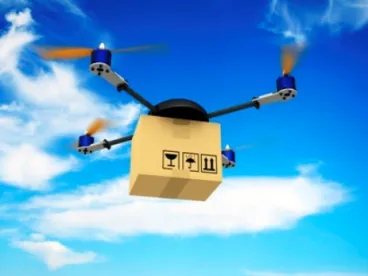A new era in the field of aviation began on August 29, 2016, when the Federal Aviation Administration’s (FAA’s) long-awaited commercial drone rule went into effect. The new rule, formally known as Part 107, broadly authorizes the use of small unmanned aircraft systems (UAS) (i.e., drones) that are employed commercially, weigh less than 55 pounds and operate at speeds of 100 mph or less. While there is much excitement surrounding the opportunities and innovation this rule brings, concerns regarding its implications for privacy persist.
What the Rule Says
The FAA eliminates the requirement for commercial drone operators to hold a manned aircraft pilot’s license and will spur significant innovation in commercial drone operation. However, under the new rule, anyone over the age of 16 who passes a background check and an aeronautical knowledge exam can receive the remote pilot certificate required to man a commercial drone.
The FAA notes that its mission is to provide the safest, most efficient aerospace system in the world and does not include regulating privacy. However, as part of a privacy education campaign, the FAA will:
-
Provide all drone operators with recommended privacy guidelines as part of the registration process
-
Educate all commercial drone pilots on privacy during their pilot certification process
-
Incorporate privacy in its B4UFly smartphone app that helps unmanned aircraft operators determine whether there are any restrictions or requirements in effect at the location where they want to fly
-
Strongly encourage all UAS pilots to check local and state laws before gathering information via their drones.
In regard to privacy concerns, proponents of Part 107 emphasize the operational limitations, which they argue have the indirect effect of protecting an individual’s privacy.
For instance, a drone must remain within the remote pilot’s visual line of sight (VLOS) at all times. This limitation does not allow for any vision-enhancing devices, so the remote pilot must be able to see the drone unaided by any tool other than corrective lenses. Further, Part 107 prohibits drone operation over any person who is not directly participating in the operation, not covered by a structure or not inside a covered vehicle. Moreover, drones may be operated only during the day, which is measured from 30 minutes before official sunrise to 30 minutes after official sunset.
While these operational limitations work to confine drone use to small areas and limit the ability to misuse drones, they fail to fully protect individuals and their right to privacy. Moreover, Part 107 maintains a waiver process, allowing companies to waive some of the rule’s restrictions so long as they prove their proposed flight would be conducted safely. On the first day the rule was in effect, the FAA had already approved more than 70 waivers, the majority of which were for night operations.
What to Expect in the Near Future
The FAA intends to continue addressing privacy concerns through engagement and collaboration with the public, stakeholders and other agencies with authority and subject-matter expertise in privacy law and policy. Although 32 states have enacted legislation regarding drones, the common issues addressed deal with the proper use of drones by law enforcement and restrictions on using drones to hunt game. Some states, California for example, have enacted legislation prohibiting the use of drones to capture an image or to record an individual engaging in private or personal activity without that individual’s permission. On the other hand, many states have not enacted, let alone proposed, legislation that covers how and when drones can gather information, capture photographs or otherwise impose on an individual’s privacy.
According to industry estimates, the new rule could generate more than $82 billion for the U.S. economy and create more than 100,000 jobs over the next 10 years. As of August 29, 2016, there were 18,940 commercial drones registered, and the FAA predicts there could be as many as 600,000 drones used for commercial purposes within the next year. With this anticipated increase in drone operations, we can expect to see more and more legislation regarding privacy regulations and perhaps even comprehensive standards at the federal level. The best rule for now is to be aware of local, state and federal privacy rules already in effect before you fly a drone.



 />i
/>i

